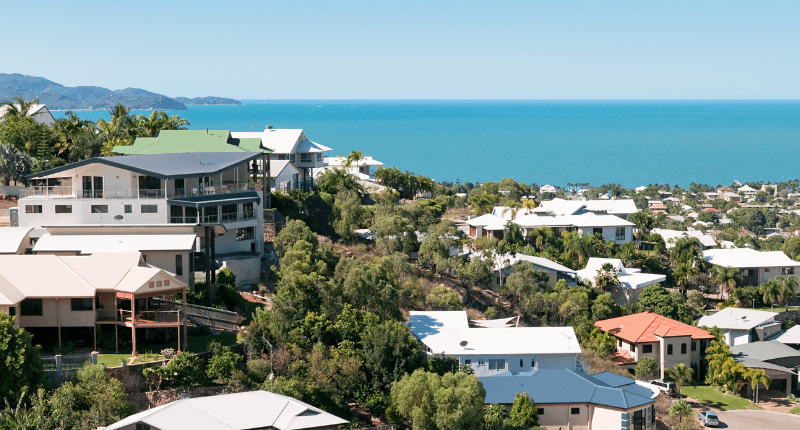- Metropolitan markets offer infrastructure, jobs, high entry costs, and lower yields.
- Regional markets offer affordability, high yields, but risk and limited jobs.
- Hotspotting advises using data-driven insights on economy, infrastructure, and growth for wise investing.
When it comes to property investment, one of the key decisions is whether to focus on metropolitan or regional markets. While both have merits, understanding each other’s unique strengths and challenges can help investors make a decision that is aligned with their goals, budget, and risk appetite.
Hotspotting General Manager, Tim Graham, said just a few years ago the regional market was not on the radar of most investors, although that is no longer the case.
“Our regions have undergone significant price growth since the start of the pandemic and with people continuing to move to the regions seeking out a more affordable lifestyle while they work remotely, those property markets are now in demand,” he affirms.
“In Hotspotting’s recent National Top 10 Best Buys report, five out of the ten top local government areas (LGAs) were in regional areas.”
When it comes to choosing an investment location, it’s important to look at which location has all the right fundamentals in place for price growth, whether that be a metropolitan or regional market.
Below are some of the pros and cons investors should weigh up.
Metropolitan markets – Pros and Cons
| Pros | Cons |
| Established infrastructure: Metropolitan areas generally have well-established transport, healthcare, and educational facilities. | Higher entry costs: Property prices in metro areas can be a barrier, with many city locations seeing median house prices well above $700,000. |
| Employment opportunities: Cities are often economic powerhouses, offering diverse job opportunities that support population growth and housing demand. | Lower rental yields: While demand is high, competition can keep rental yields lower than in some regional markets. |
| Higher liquidity: The demand for property in cities tends to be more consistent, making it easier to buy and sell. | Limited affordability: Finding high-growth properties in capital cities can be challenging for investors with smaller budgets. |
Regional markets – Pros and Cons
| Pros | Cons |
| Affordability: Regional markets often provide more affordable entry points, enabling investors to secure properties with growth potential without high capital outlay. | Market Volatility: Some regional markets can experience greater price fluctuations due to fewer buyers and sellers. |
| Higher Rental Yields: Rental demand can exceed supply in many regional areas, leading to strong rental yields. | Employment Variability: Job opportunities may be less diverse and dependent on a single industry, leading to potential economic vulnerability. |
| Lifestyle Appeal: With the rise of remote work, many people choose lifestyle-rich regions supporting population growth and housing demand. | Infrastructure Limitations: Regional areas may lack the infrastructure that metropolitan areas offer, though this is improving in certain growth hubs. |
Mr Graham mentioned that often, budget was a deciding factor for where to invest, and regional locations often gave buyers more “bang for their buck.”
“In our experience, entry costs play a significant role in determining which markets investors can access,” he said.
“Capital cities may offer a better fit for those with higher budgets. However, regional areas can provide excellent returns for those with tighter budgets, and we’ve seen significant growth potential in select regional locations across Australia.”
Tim Graham, Hotspotting
No matter where investors decide to buy and their budget, Mr Graham said it was essential to use a data-driven approach.
“Whether evaluating metropolitan or regional locations, we always rely on our EMPIRICAL formula, a data-driven approach, designed to identify areas with long-term growth potential while minimising risk,” he affirms.
The EMPIRICAL formula
- Economy: A strong, diverse economy is essential.
- Market size: A minimum of 50 house sales in the past 12 months.
- Population: The LGA ideally should have a minimum population of 15,000.
- Infrastructure: Existing amenities must be robust, with evidence of major new projects.
- Rental market: Low vacancies are crucial, as they support upward pressure on rents.
- Increasing employment opportunities: Areas with job growth.
- Capital growth potential: A location must have the potential for capital growth within five years.
- Affordability: Locations should have median house prices below $700,000.
- Low risk: Avoid volatile markets that present high risk to consumers.
“Whether you’re looking at a bustling capital city or a promising regional hub, the best investment is one that aligns with your budget, goals, and risk tolerance,” Mr Graham said.
“By considering the pros and cons of each market type and focusing on long-term growth, investors can make informed decisions that support their financial success.”








